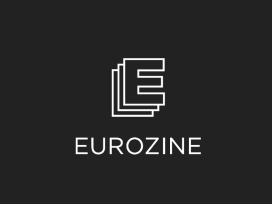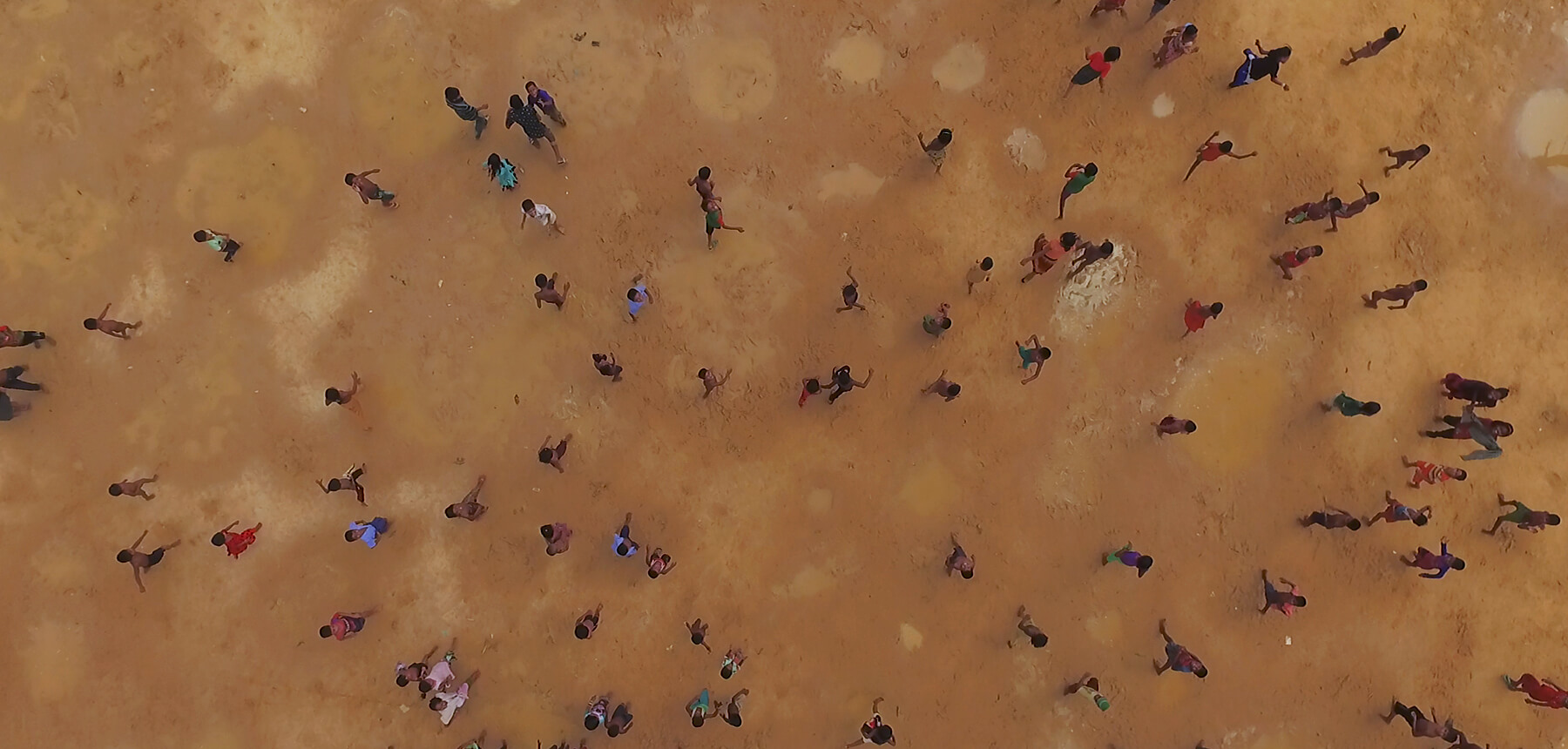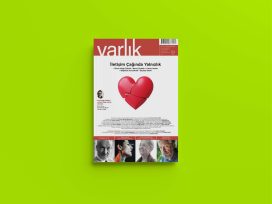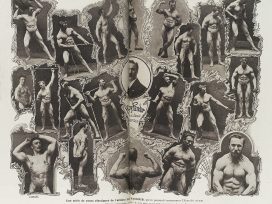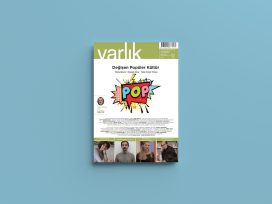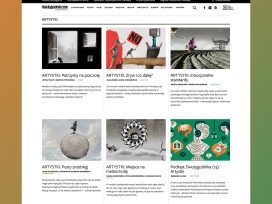The internationally renowned artist Ai Weiwei has looked at the plight of migrants around the world in his recent works. No doubt this is one of the reasons why newspapers and even dictionaries persist in defining him as a ‘political’, ‘activist’ and ‘dissident’ artist, in spite of his commercial strategy, which more closely resembles that of Damien Hirst and Takashi Murakami, and his remarkable standing within the art market (his Map of China sold for 2.5 million dollars at Christie’s in New York in 2016). This is not the place to discuss Ai Weiwei as a public figure, his biographical trajectory or the aesthetic qualities of his oeuvre. But since he looks ‘at the plight of migrants’ in his film Human Flow (2017), let us first try to understand how he looks and what such a gesture says about him in terms of his relationship with the other, that is, his relationship with the refugees filmed around the world in this work.
There are many ways of looking. In any case, the physical gesture of looking closely at something or someone suggests a – downward – leaning movement of the body, the shoulders, the head, the eyes. This may be extended through a movement of the hand, which is held outstretched, offered, or seeks to take something and, why not, might even film itself with a camera. It is clear that such a gesture simultaneously conveys an aesthetic approach, an epistemic grasp and an ethical relationship. In The Gay Science, Nietzsche sought to comment on what he termed ‘the scope of the moral’ inherent in each of our gestures: it is revealed, he said, as soon as we decide to approach someone. It even appears from the moment an image is produced of something or someone: ‘As soon as we see a new picture, we immediately construct it with the help of all the old experiences we have had depending on the degree of our honesty and justice. There are no experiences other than moral ones, not even in the realm of sense perception.’
The simple actions of leaning over to look at something or to take a picture are therefore both linked to a certain degree of honesty and justice in the person performing them. In this sense, a film – particularly a film that creates images to ‘look at the plight of refugees’ – ought therefore to be understood as an image gesture, one which reveals, to a certain degree, the nature of its own honesty or justice: a gesture that is therefore both ethical and aesthetic. At best, this would be a gesture of giving back to the other person – the person whose image is being shaped – their imperilled dignity, as can be seen in all the most beautiful documentary films, from László Moholy-Nagy and Luis Buñuel to Wang Bing and Harun Farocki.It is worth recalling once more the oldest sense of the word ‘image’, in its Latin form imago, which primarily pertained to the matter of legal rights, if not of justice – in any case, to a ‘republican’ dignity: dignity as a res publica, or ‘public good’.So what dignity does the image here potentially seek to give back to the people being filmed – across some twenty-three different countries – under the very conditions of their greatest distress?
If filming is a question of gesture, how is that question being posed, how is it applied here? In Human Flow, there are various ways of looking. The first appears in the initial introduction to the subject which, as is often the case, already instructs us in many ways on the work as a whole. It all starts with a shot that looks down at a ninety-degree angle, and from a great height, over the surface of the sea. The scene is beautiful, blue, calm and iridescent. Gulls fly past slowly. The music at this point – and for the duration of the film – swells with a soaring, emotional tonality reminiscent of ‘space music’. This view from above, taken by a drone equipped with a very high definition camera, is followed by a shot where, against the same deep blue, an isolated boat appears in the frame. The montage, accompanied by the same music, then reveals the horizon, blue-washed with a stunning Mediterranean dawn; then the image of a lighthouse dominating the coast and illuminating the area with its powerful projector beam; then – in a reverse shot – what the lighthouse seems to be peering at towards the horizon, namely the same tiny boat. Next we see a helicopter flying past, which shows us the relationship between this inflatable craft lost at sea and the devices designed to locate it from the sky or from the shore: this, then, is the first high vantage point the film brings into play.
What does this tell us, exactly? That the film Human Flow – whose title already implies that human beings can be viewed from a great height or, in any case, viewed as anonymous moving masses – begins with a gesture that consists of looking down from airborne devices. The drone whirring through the sky on the whim of its operator sees everything; or at least we think it does. But it doesn’t truly see, if seeing means to exchange, to take or return a look. In the high definition shots taken from the sky, nothing is exchanged and nothing is given back. Despite the fact that drones can be used, as we know, as deadly weapons of war, the device itself cannot be ethically evaluated: rather, it is how it is used – whether it serves a humanitarian aesthetic or a military tactic – which reveals the degree of honesty and justice of its user through the images it takes.
Indeed, in the words of Kurt Tucholsky, the great observer of urban capitalist society and the fascist counter-revolution:
Seen from above, it looks rather like this:
everyone milling around everyone else, seeking something. […]
millions of people flow out of the grey, soot-stained stations every morning into the city, their feet drag on the pavement, there’s a cloud of human vapours above them;
friends betray their friends in their search;
the rentier claims his dividends;
the beggar seeks someone who believes in their blindness;
gamblers, half-crazed, seek someone to scrounge off;
the banker seeks other people’s money. […]
Seen from above, it looks rather like this:
nobody has what they actually need.
Everybody is seeking something.
At least Tucholsky was a great satirist: his ‘human flow’ was observed in the most critical and incisive way possible, contrary to the Neue Sachlichkeit (New Objectivity) which he excoriated just as much as Walter Benjamin did.
It seems to me that the opening images of Human Flow are straight from the playbook of what appears to be the latest New Objectivity: through its treatment of panoramic shots, the high vantage points achieved by neither crane nor plane, the motion speeds, and the carefully re-contrasted colours, it ends up producing visual clichés – as opposed to truthful images – of our world, like the glossy pages of certain so-called geographical magazines which are, in truth, more touristic than anything else. The New Objectivity of the 1930s had as its slogan ‘The world is beautiful’, which was also the title of a photography book by Albert Renger-Patzsch. The somewhat less innocent correlative of the phrase lay in the fascist aestheticization of politics: ‘War is beautiful.’ To counter this, Benjamin turned to the substantial virulence and powerful criticism inherent in the literary montages of Alfred Döblin, the theatrical montages of Bertolt Brecht and the photographic montages of John Heartfield.There is no doubt that Human Flow looks at the plight of refugees. And it does so with solicitude. But it goes about it in the manner of a Discovery Channel documentary. Why must it look down from such a height, over such beautiful scenery? Why choose these opening images that are halfway between a postcard and the view from an observation tower? Why use these abstract images produced by surveillance devices?
But there’s one detail in this description of the first few seconds of the film that I forgot to mention. The wide shot of the sky at daybreak, skimmed by a stray sunbeam, suddenly appears to be ‘dressed’, overlaid with a quotation written across it in capital letters: it describes – poetically – the ‘right of life’ as being the ‘right of the first man’. The phrase is taken from a text by Nâzim Hikmet, known to have been deeply affected by the ‘starving masses’ of Anatolia in the 1920s, and who remains the ultimate figure of the poet in exile; a poet who also spent long periods imprisoned in Turkish jails for his political views. He is the author of a famous text that could easily be seen to echo the title of Ai Weiwei’s film: Human Landscapes.This quotation materializes across the beautiful Mediterranean sky as if to demonstrate a new way of getting an overview of the human flow of refugees. It is as though the film at this point is attempting to look at the subject from a verbal height, from the level of speech and thought. Being able to look down on things from a high vantage point is a faculty often attributed to great scientists, great thinkers or great poets. Goethe, however, employed the French word aperçu to show how in overly distancing oneself, particularly at height, one risks losing sight of whatever one seeks to look at. He was also well aware that the German word Übersicht means both what is taken in with a single glance – like on a geographical map – and what is omitted: what is allowed to pass by, what is neglected, what we forget to see.
We might, therefore, ask ourselves this question: is gaining height and perspective over something the same thing as truly thinking about it – thinking about a phenomenon like the flow of refugees around the world – in depth? No doubt the gesture is a necessary one: we do need the ‘perspective’ of statistics, demographic analyses and geopolitical viewpoints, whereby the drones of Human Flow allegorize the global vision and the Nâzim Hikmet quote allegorizes the humanist lesson to be learnt. But doesn’t a phenomenon like this one, a product of power struggles and political decisions, demand above all a critical eye, and not simply a high vantage point? As Walter Benjamin said, ‘criticism is a matter of correct distancing.’And as his entire mode of thought would imply – namely in relation to ‘dialectical images’ as perfect crystallizations of historicity –, ‘correct distancing’ is itself a matter of dialogic or dialogued variations between near and far, high and low, perceived and thought, image and phrase… We assume, quite rightly, that a film offers the ideal vehicle for this kind of dynamic or dialectic. The Nâzim Hikmet quote appearing against the background of the dawn sky thus leaves us awaiting everything – visible or legible – with which it may enter into dialogue.
I can now return to the opening scenes of Human Flow. The makeshift boat is still quite far off. In the picturesque stillness reminiscent of a tourist documentary we see a small local fishing boat gliding past. Then the migrants’ boat approaches and we start to be able to make out its occupants, dressed in dark clothing in the half-light, some of them wearing life jackets. With the boat approaching, the camera naturally starts moving in a new way: it is now ready to look at them at human height. What was previously pure flow, pure abstract morphology in the drone images or the very wide shots, at last lives up to its promise of faces; its quality of being human. But we will have to wait a little. We can see figures, but not yet faces. They are packed tightly together on board the inflatable boat, filmed from a slightly high-angle shot, in other words with a subtly downward-looking viewpoint, just as we see them being looked down on by the coastguard boat that comes and moors alongside them.
The first shot of the film that is at human height – close to ground level, in fact, since the man being filmed is crouched down by a roadside facing the sea – is actually an image of the artist himself in the act of photographing what we assume to be the moment the refugees reach the beach. The artist’s choice to place himself in the foreground, in other words at his own human height in a film about untold numbers of human beings in distress – this choice seems to me to be a decisive one, which already reveals the degree of honesty and justice of the images shown over the ensuing 140 minutes of Human Flow. From this shot, we understand that the artist, in his film, is not only the director of these images but also their protagonist: he is looking at himself looking at refugees. And how, then, does he look at the other? With kindness, that goes without saying. With compassion, and even with the courage implicit in the act of leaving his studio to travel the world with various film crews in pursuit of all this human suffering. But we can already see that what he wants above all, as an artist, is to show us his own involvement in the story, an involvement that we willingly assume to be sincere. The next few seconds of Human Flow suggest that, after having crouched down to look out to sea, he then stood up and ran towards the shore to act under the watchful eye of his own cameras. He himself films his involvement: this of course produces urgent, blurry shots, with no horizon, often at stomach height, often angled towards the ground, in which we see fleeting glimpses of the first movements of the refugees landing on the Mediterranean beach. The highly specific colours – orange, silver or gold – of the life jackets and survival blankets punctuate the air of urgency. The chromatic contrasts don’t seem to have been doctored much. This resembles direct cinema. The music from the last few minutes gives way, accordingly, to an undeniable direct sound.
Very quickly, in the heat of all this action, the artist reappears. We see him accompanying a young man, chilled to the bone by the crossing. He leads him to the area where the hot tea is served: ‘Drink the tea’, the artist says to the young man. ‘Thank you very much’, the refugee of course replies, to which the artist says, ‘You are a good man.’ This exchange is all filmed in a low-angle shot: designed to discreetly enlarge our ‘activist artist’. The next shot is filmed as both a ‘point-of-view’ and a high-angle shot, from the height of a standing man talking to a man sitting down. It is the point of view of the artist himself, which enables us to begin to understand the logic behind these high vantage points. The man who is looked down on is the refugee, still frozen with cold. Question from the artist: ‘Your name?’ Answer: ‘My name is Muhammad Hassan.’ Question: ‘From where?’ Answer: ‘Iraq. Salah ad-Din.’ The expression of the man being looked down on is not quite so confident as he draws on his cigarette, and understandably so: the artist has done nothing but ask the same questions that come up in every police interrogation encountered by refugees on arrival in Europe.
On that, cut. Return to the Mediterranean landscape. A boat appears in the distance. Is it the same one? Another one? It doesn’t matter, we’re already looking out from the high vantage point of a very widespread problem, a global issue of our times. The light now glitters magnificently as it dances across the surface of the sea. There’s the sound of calm lapping waters, untroubled waters. And now the title of the work appears in capital letters: HUMAN FLOW, A FILM BY AI WEIWEI.
I’ve just described the first four minutes, which take the form of a prologue, of the film in question. Need we go any further? The film is two hours and twenty minutes long, so I think I’ll stop there. Chiefly because the artist’s choices throughout the film only serve to confirm – and more than that, take to excess – the trends that emerge in the four minutes of the prologue. We only have to return to our basic typology of high vantage points in order to reconsider, more generally, the degree of honesty and justice of the ambitious Human Flow.
First of all, what do the images produced at the height of airborne devices convey? The use of drones is so ubiquitous and systematic that it has the effect of flattening everything out, visually and psychologically, from a great height, whether it’s the Iraqi desert, the jungles of Bangladesh or the hills of northern Greece. The slow, unflappable flight of the machine – reminiscent of a large flying insect rather than a bird – is everywhere, even infiltrating the maze of houses ravaged by war. It is often accompanied by the same anaesthetizing music. Furthermore, it endures the contrast of dramatic cuts whereby we switch, for no apparent reason, from one country and one landscape to another. It becomes gruelling for the viewer, at one point literally skimming over a long line of migrants heading towards Macedonia, where the state apparatus – customs officials, police, the army – will be quick to voice their point of view, notably from the side of the Hungarian border and its guards, without qualms.
The high vantage points of these airborne machines, like many technical devices, have the effect of reifying or objectifying everything they film. It’s a contradiction inherent in Ai Weiwei’s film that it establishes a humanist discourse through the excessive and accepted – in other words non-critical – use of dehumanizing images. The most glaring example of this contradiction appears at a point where, between a few well-meaning words referring to the refugees – ‘they are human beings, after all’ –, a perfectly vertical tracking shot from the sky over a Syrian refugee camp in Turkey shows us their movements in slightly accelerated motion. Despite the relative slowness of this tracking shot, it gives us the distinct impression that we are approaching a swarm of ants. We are indeed well aware that these are human beings after all, but here we are being forced to see them – the fast motion footage revealing the filmmaker’s desire to make this clear – above all as ants. A little later in the film, the statistical projections for the African population – two and a half billion inhabitants by 2050 – appear against the backdrop of an image of a giant termite mound. The film ends on a potpourri montage of these drone shots from all over the world, set against words spoken by an astronaut describing his sublime vantage point over our planet during his journey into space.
Human Flow also conveys its images using words, and does so far more extensively than the prologue’s simple poetic epigraph from Nâzim Hikmet would imply. Indeed, a great many other quotations appear over the course of the film, superimposed over images: ancient Buddhist sayings, Persian poems, extracts from Adonis, Sherko Bekas (a Kurdish poet), Nizar Qabbani (a Syrian poet) and Mahmoud Darwish (a Palestinian poet)… But the status of words within the film deserves to be interrogated beyond these soothing instances of poetic or spiritual wisdom. Who is doing most of the speaking here? That is the question to ask. The refugees themselves? Hardly: their spoken statements rarely exceed around fifteen seconds – the same length of speech for statements in any televised news report –, which reduces their speech to often formulaic and even impersonal expressions of the freedom they crave or the suffering they have endured.
Those who speak far more comprehensively and at length in Human Flow are, generally speaking, the authorities whose very role is to look down on crisis situations from above. True, the expertise of non-governmental organizations is valued through the words of official representatives from the UNHCR, Human Rights Watch, Unicef, etc. But the issue becomes more complex when it involves the political or military authorities: for example, the Hungarian official who ‘protects’ his side of the border; the princess of Jordan, looking elegant, talking against the backdrop of a mountainous landscape; or Walid Jumblatt speaking in person from his palace. These are always words that claim to be from experts, and they explain to us, always in English, from a high vantage point, the whys and wherefores of the plight of the refugees. It’s a way of walking down the well-trodden path of the television documentary, in which the artist, filmed in a reverse shot, assumes the role of the star journalist systematically acquiescing to the words of authority. To which are added countless quotes from the international press (not a single book is referred to), from Die Zeit (Angela Merkel: ‘We can do it’) to the New York Times, from The Guardian to Der Spiegel and from CNN to CBS News…
Through this wholehearted affiliation with the media and official bodies of communication, Human Flow thus presents none of what Gilles Deleuze described as counter-information advanced by the work of artists to the level of an act of resistance: ‘What relationship is there between the work of art and communication? A work of art has nothing to do with communication. […] In contrast, there is a fundamental affinity between a work of art and an act of resistance. […] Counter-information only becomes really effective when it becomes an act of resistance.’
Lastly, what happens at a human level? How do Human Flow’s numerous cameras see human beings? What do we, as viewers, see of this way of seeing? We see soldiers in Iraq looking down in an authoritarian manner at the mass of refugees crouched on the ground. We see men and women posing, in silent misery, against the white canvas of a UNHCR tent. We see a few women in front of the camera saying a few hurried, awkward words. We see a man crying at the graveside of five members of his family. But why so many cameras for so little face-to-face footage? Primarily because, in this ‘artist’s film’, it is about filming the artist himself, camera in hand, coming to the aid of refugees the world over. The true ‘human level’ in Human Flow is revealed mainly to involve staging the greatness of an artist in direct contact with world suffering.
This is why it is possible to see in this film the account of a great humanitarian art pilgrimage towards the lands of despair. A film, in sum, that is paved with good intentions and technically assisted and constructed accordingly. No doubt it will succeed in its indignation, and in inciting indignation in us, once again, at the situation inflicted upon refugees around the world today. But does this indignation, coming from a cultural world dignitary, succeed in giving refugees back the civic dignity that is their due? One might say that famous artists offer those they address the same kind of dignity by proxy that Angelina Jolie did, so very kindly, for the starving people of Sierra Leone. But this is to speculate very naively on the ethical virtues of the society of spectacle: as though an artistic aura should suffice to ‘touch’ the wretched of the earth so that they – through receiving the royal touch – might then be cured and restored to their dignity as subjects. Let’s be clear: it is not the fact that an art form comes and looks at the plight of refugees that is being called into question here, nor is it suggested that this should be banned. On the contrary, it’s about saying that a decision like this – to address the subject of refugees – must at all times be reinventing an ethics of the form that is capable, at the very least, of not assuming power over the filmed subject. It is always possible for anybody, even a ‘great’ artist, to look at somebody or to depict them visually without having to look down on them ‘from above’ (neither Vermeer nor Rembrandt, as far as I know, ever looked down on their subjects from this kind of height).
Yet the form that is constructed and executed in Human Flow seems to me, quite simply, to lack this aesthetic rigour, along with both the resulting honesty and justice. This can be seen principally in the way the artist develops his own self-portrait throughout the film against a backdrop of refugees, or by employing certain dialogue methods in which the reciprocity is little more than a sham. On Lesbos, the artist takes selfies like any star with his admirers. In Jordan, the artist makes kebabs (or pretends to do so). He films lines of refugees from afar, he films a picturesque camel up close. Elsewhere, he buys some fruit from a street vendor and pretends to check his change. In Idomeni, he walks through the mud for three or four seconds, talks to someone on the other side of a fence, is captivated by the image on a mobile phone of a small cat, films whilst walking past makeshift tents, takes an interest in his own shadow and, lastly, simulates an exchange of passports with a refugee who he then proposes should come and live, instead of him, in his Berlin studio… Politeness – or irony – prevails in the refugee: ‘Thank you, really, thank you.’ The artist responds with a phrase that his own gesture has just contradicted: ‘I respect you.’ And so on and so forth: here he is having his hair cut (full screen); there he is helping a woman vomiting (the bucket was conveniently nearby); elsewhere he invades the space where the grief-stricken man is weeping for his family; in Beirut he walks in the street, flanked by two soldiers to ensure his protection; in Gaza he has himself filmed, ‘alone’ on the beach, filming the sea, then he goes and dances with the Palestinians; in Kenya he leads us to believe that he is lost, alone with his cameraman, in the middle of a sandstorm; in Berlin he has himself filmed filming migrants lined up as though for a military drill; near Ciudad Juárez he talks to an American policeman, has his hair cut by an impoverished Mexican and take selfies with his wife. At one point he is yet again being filmed filming himself with a placard on his chest reading ‘Stand #WithRefugees’, as though he were a lone demonstrator. Above the slogan large, handwritten capital letters read: ‘AI WEIWEI’. He has known for a long time –since Duchamp, since Warhol – that an artist is primarily someone who signs things and whose signature is worth something.
There are no doubt good intentions in the attempt to apply the value of art to help an entire population that has been devalued due to being deprived of certain fundamental rights. In today’s general context of the great concern of artists and intellectuals regarding the plight of refugees – which has thankfully resulted in a significant increase in photo and film essays on the subject–, the peculiarity of Human Flow relates, in addition to its wealth of means, to the fact that the value of art ends up occupying a central and even establishing position. There are, of course, crucial works of art produced at certain moments in history, and we could even say that Ai Weiwei has gone further than Picasso, who didn’t make it as far as Guernica himself. But the value of art is not a mere policy. To conclude, in this film I see only an abstract act of charity: nothing more than an artistic coin in the hand of a refugee.
‘If we are saved we feel humiliated, and if we are helped we feel degraded’, wrote Hannah Arendt in “We Refugees”, a text drawing on her own experience of detention in the French camps and her own journey into statelessness.This is the ultimate sensation of indignity for the refugee, in the very moment when they feel obliged to say, ‘Thank you, really, thank you’. It has become a leitmotif in Hannah Arendt’s political writings on the problem of refugees, the stateless and general pariahs of society. By 1935, then in exile in Paris, she asserted that the problem of refugees will never be resolved by any ‘charitable institution’: ‘True, those who do not have money must be helped. But money alone does not solve the problem of these wanderers.’In 1941, in an open letter to Jules Romains, she raised this ‘despairing question: Is our alternative truly only between malevolent enemies and condescending friends?’That same year, Arendt wrote forcefully and angrily that ‘the existence of a people’, or its survival when it must flee persecution, ‘is definitely too serious a matter to leave to wealthy men […] For only the people themselves are strong enough for a true alliance.’What did she mean by the expression ‘wealthy men’? She meant, both specifically (with regards to Jewish American organizations) and generally (in terms of political theory), that the moral ‘good intentions’ of charitable gestures are always executed from above. She meant ‘charity’ when considered as a ‘lesser evil’ – which, as we know, never results in anything good – and, on the level of principles, as a depoliticization of the misery suffered by so many throughout history. This is what Arendt would define, in 1944, as a ‘philanthropic machine’ whose consequence was to ‘suffocate the desperate cries of the oppressed’,forcing them to resign themselves to an endless ‘Thank you, really, thank you’ with regards to those in power.
Modern-day refugees, like the refugees of yesteryear, need far more than simple philanthropy or charity. Their charitable reception in Europe does not, to say the least, only bring them benefits. It is often a form of charity that comes with conditions, which indicates that it belies a desire for surveillance and rejection. Consequently, the charitable form adopted by Ai Weiwei, set against his drone-mediated surveillance images, only serves to replay the look from above that immobilizes refugees within the political deadlock. Refugees don’t need us to turn their meat kebabs for them, hold out a bucket for them to vomit into, or pretend to give them an artist’s studio in Berlin. They demand simply to be seen as equals, or in other words to have a civic and legal status once set in stone by the guiding principles of our democracies, but in stone alone. A work of art confronting this issue cannot be a work of philanthropy: rather, it should seek to attribute blame, to dig deep, to publicly pinpoint this wound of history. To behave, to put it frankly, in a critical form.
